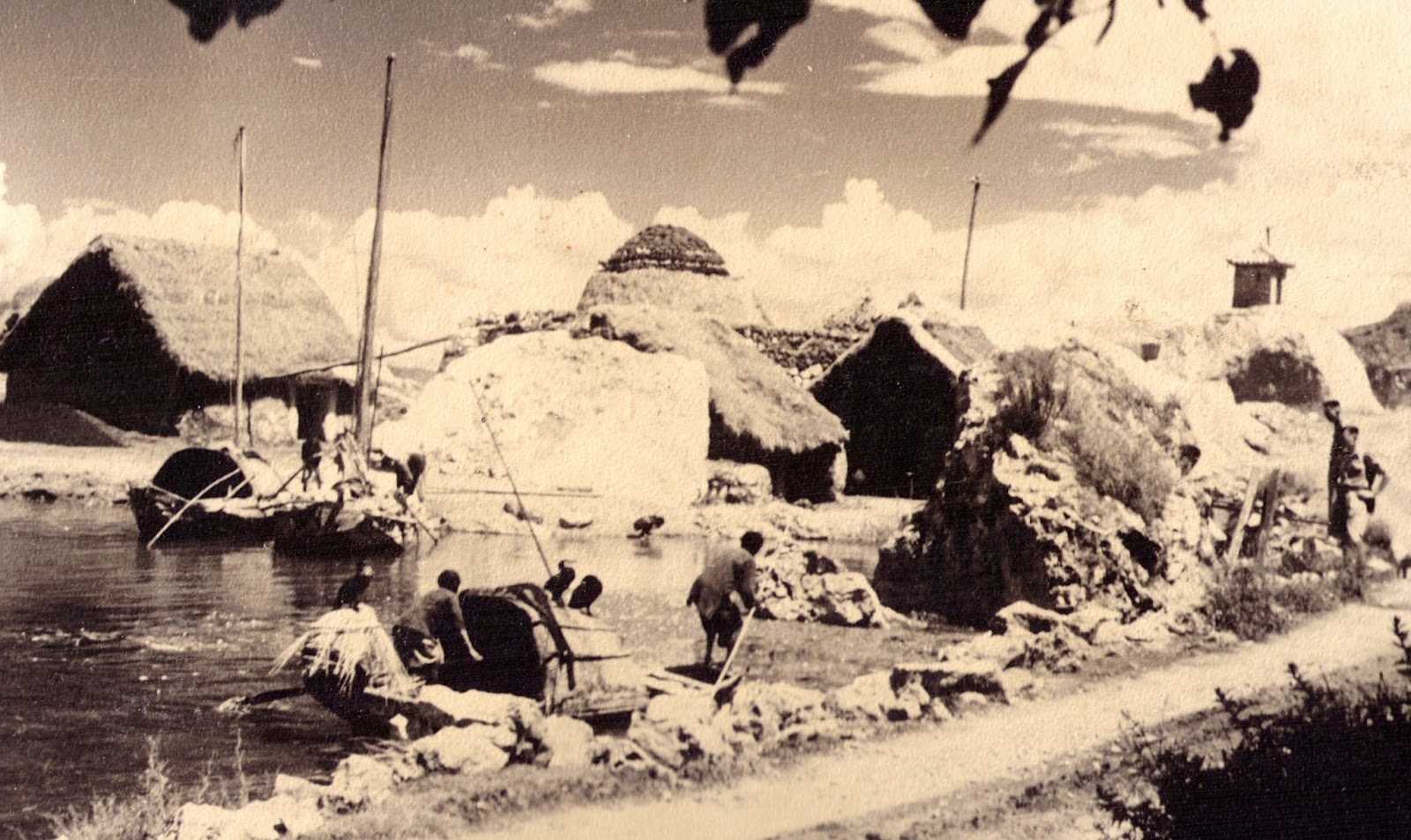In Part 1, we began the study of Page 16, and noted the transition from the first base camp, somewhere near Kunming, the terminus of the Burma Road, south of the Yangtze. The majority of the photos on the page are from that location.
Team JACKAL has moved about a thousand miles to the northeast, to Kaifeng of many canals, on the Yellow River, east of the target destination, Hsien.
The photo top right is the first to show a canal; the photo bottom center shows a houseboat on a canal or a lake. See how they and the dollar bill slant off - to the northeast, as it were.
 |
| Page 16, scan of bottom half. |
 |
| Eugene Zdrojewski and Albert Robichaud. |
 |
| Why save this dollar? Let us take a close look. |
C.H. Phelps,
F. A. BucKANAN,
G.A. Cook,
J. KEllEY
S.W. Hart
S.P. LIU
 |
| James D. Kelley rotated the bill and wrote his address: Pritchard, West Virginia. |
Roy Perkins, Jr.
 |
| GABRIEL MASH B'KLYN, N.Y. |
The dollar bill is glued to the page with the purple letters backwards. When we flip the image of the scan, we see this, below. Can you read the top line? If so, please let me know.
"KAIFENG, CHINA" is Dad's writing; I can tell you that.
 |
| Captain Edward B. Zarembo |
 |
| Kaifeng |
 |
| Chinese commando patch. From the OSS site. |











































